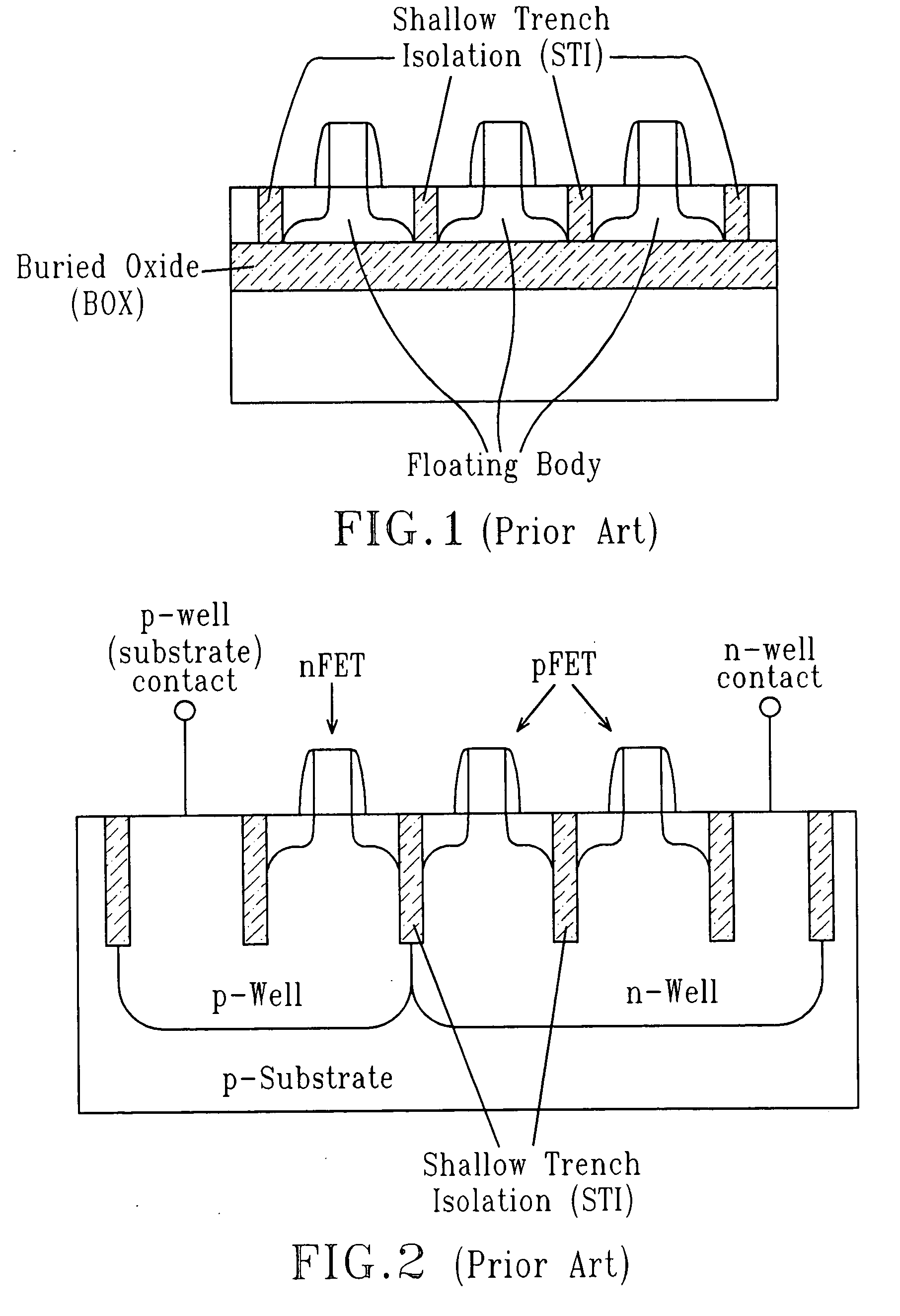CMOS on hybrid substrate with different crystal orientations using silicon-to-silicon direct wafer bonding
a technology of silicon-to-silicon direct bonding and hybrid substrate, which is applied in the direction of semiconductors, electrical equipment, semiconductor devices, etc., can solve the problems of significant deformation of the electron mobility of (110) si surfaces, undesirable width of pfets, and inability to adapt to nfet devices, etc., to achieve the effect of improving the performance of each type of devi
- Summary
- Abstract
- Description
- Claims
- Application Information
AI Technical Summary
Benefits of technology
Problems solved by technology
Method used
Image
Examples
Embodiment Construction
[0044] The present invention, which provides a method of forming CMOS devices on a hybrid substrate having different crystal orientations using semiconductor-to-semiconductor direct bonding, will now be described in more detail by referring to the drawings that accompany the present application.
[0045]FIG. 3 shows an initial hybrid substrate 10 having different crystallographic orientations that can be employed in the present invention. Specifically, the hybrid substrate 10 includes a first (bottom) semiconductor layer 12 and a second (top) semiconductor layer 16 having a bonding interface 14 located therebetween. In accordance with the present invention, the first semiconductor layer 12 comprises a first semiconductor material that has a first crystallographic orientation and the second semiconductor layer 16 comprises a second semiconductor material that has a second crystallographic orientation which differs from the first crystallographic orientation.
[0046] The first semiconduc...
PUM
 Login to View More
Login to View More Abstract
Description
Claims
Application Information
 Login to View More
Login to View More - R&D
- Intellectual Property
- Life Sciences
- Materials
- Tech Scout
- Unparalleled Data Quality
- Higher Quality Content
- 60% Fewer Hallucinations
Browse by: Latest US Patents, China's latest patents, Technical Efficacy Thesaurus, Application Domain, Technology Topic, Popular Technical Reports.
© 2025 PatSnap. All rights reserved.Legal|Privacy policy|Modern Slavery Act Transparency Statement|Sitemap|About US| Contact US: help@patsnap.com



